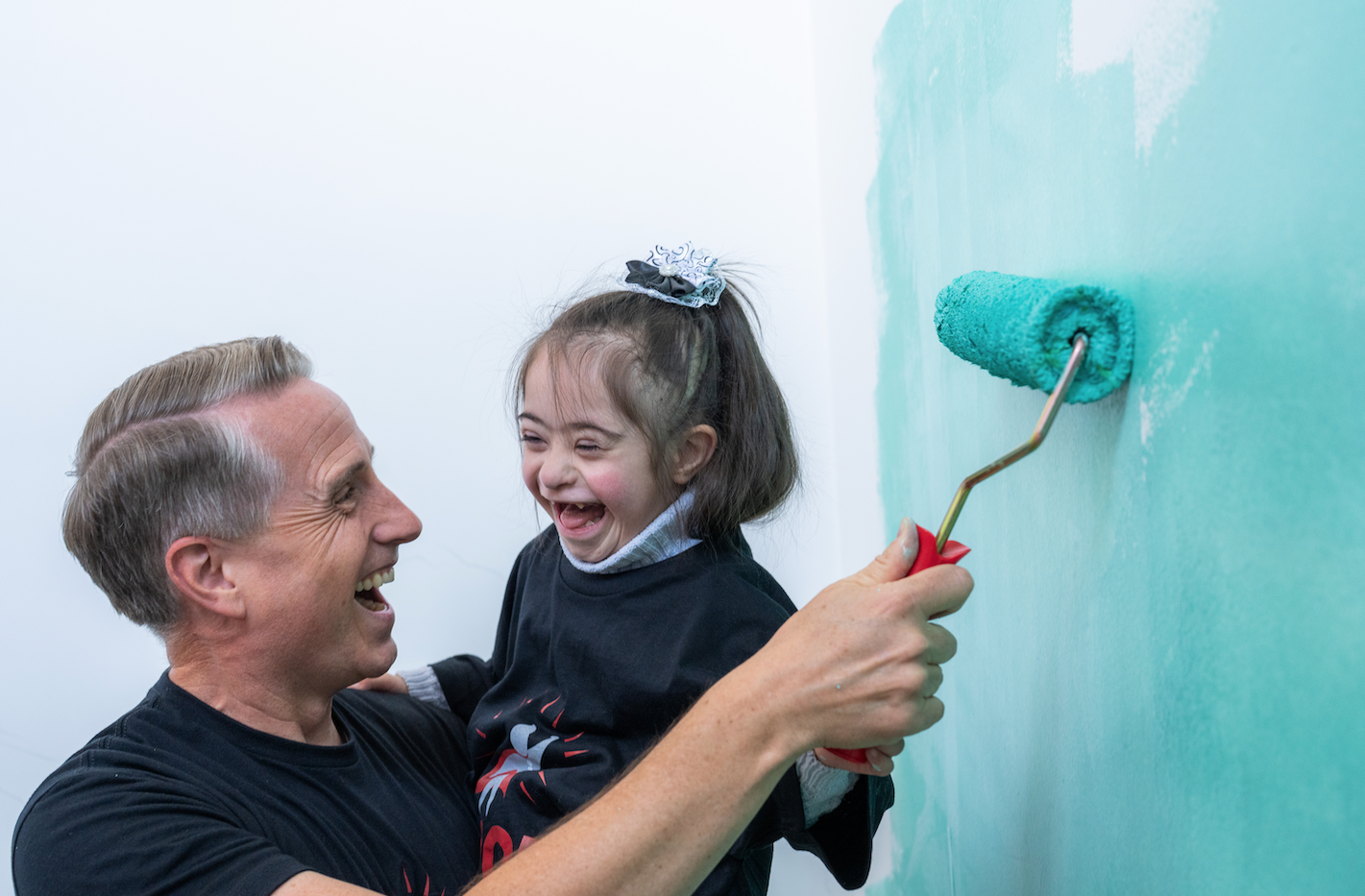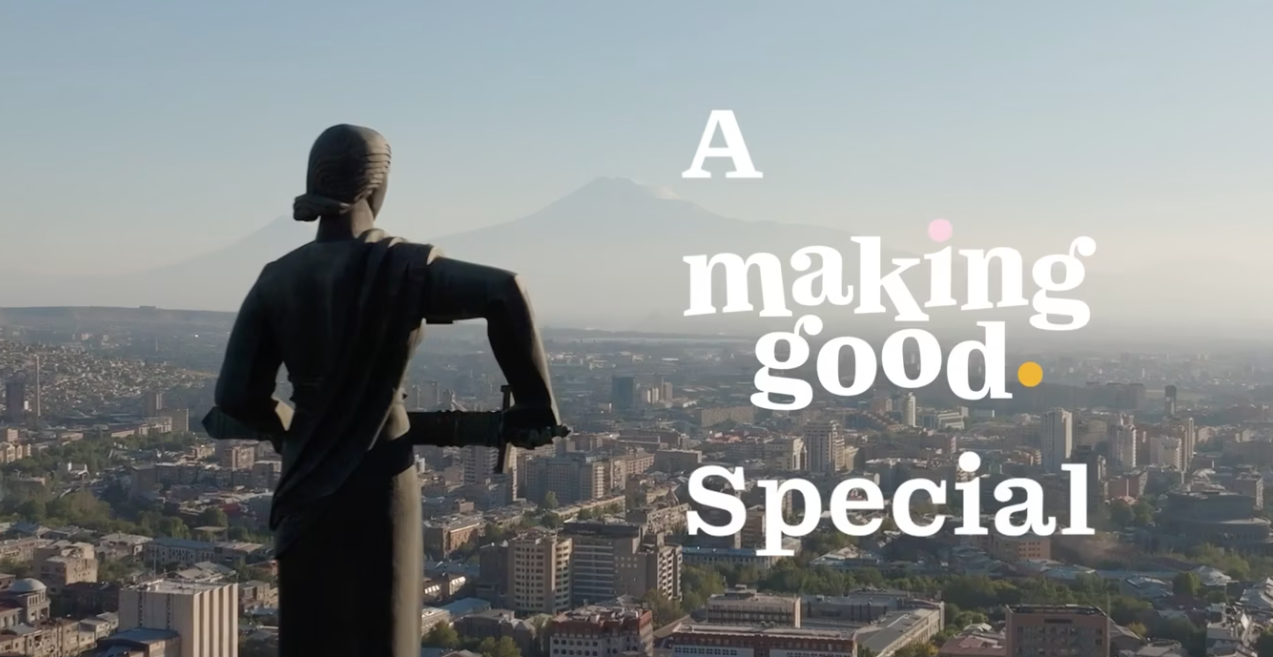Edge of the Earth: Reaching for the Sky
Cosmic executed post supervision, color, and VFX on the four-part HBO docuseries, Edge of the Earth.
Kyrgyzstan is one of the most mountainous countries on the planet; Adrian Ballinger, whose summited 26,000+ ft peaks 17 times, calls it an “alpine playground.” The quality of climbing in such a remote place is what makes Pik Slesova so unique, like a “El Capitan in the middle of nowhere.”
Summiting 8,000 meter peaks 17 times and summiting Mount Everest eight times, including once without oxygen, Ballinger is one of the best high altitude climbers and mountain guides. Born in Cheltenham, England, his family was not outdoorsy when they moved to America; slowly, he learned to become comfortable in the cold, wet New England winters.
Emily Harrington, 5x National Climbing Champion, likes the feeling of being on the edge of uncertainty. Harrington discovered climbing at age ten, quickly changing from something she knew nothing about, to something she’d do for the rest of her life. At 16, she began participating in World Cups, making her own jerseys by sewing on an American flag. Competitive rock climbing requires a serious regime and pressure; after developing an eating disorder, she began falling out of love with climbing until she hit a turning point. Harrington’s love for climbing evolved as she did as a person, beginning to explore the adventure side to it later in life and leaving the competition behind. Pik Slesova is by far the most remote wall Harrington’s attempted, “It’s not like Yosemite. You don’t just drive up, park your car, walk 20 minutes, and start climbing.”

The goal is daunting: free climb a 3,116 ft rock route on the Northwest face of Pik Slesova, a high level free route that's only seen one team ascent before.
Climbers who have climbed Pik Slesova in the past have had different people freeing different pitches, with no one person freeing every pitch. That leaves a unique opportunity for Harrington and Ballinger to free every pitch on the line to the summit.
Together for nearly ten years, the couple met on Mt Everest 21,500 ft up. Harrington and Ballinger are confident in their ability to combine strengths on one objective, both being professional climbers but known for being on opposite spectrums of the sport. Ballinger is known for walking up big walls really slowly, while Harrington is known for high-end gymnastics rock climbing- big wall rock climbing is where the pair begins to come together. This expedition, like every trip they do together, will be a relationship test.
“There’s nowhere where I feel the focus towards a single goal. You are not thinking of anything else other than not getting killed on that mountain,” says Ballinger.

Ongoing border conflicts in Kyrgyzstan emphasizes the region's instability. The first thing on Harrington’s radar when planning this trip was the 2000 kidnapping of Beth Rodden and Tommy Caldwell in Ak-Su Valley; while sleeping on a ledge 1,000 ft up, the pair was shot at before taken hostage at gunpoint by two men they later learned were rebels from Uzbekistan. Though they were able to escape by pushing the rebels off a cliff and finding a military base, ongoing border disagreements and fighting continues in the area.
Expedition tensions and concern begin to rise as they reach Batken. Much of the clashes in the region have to do with the management of the lake. The duo explains 2020 was the worst drought in 25 years in this region, a place threatened by climate change.
“Wars are gonna be fought about water and that’s happening here now,” Ballinger says.
“It's not about threatening our adventures or our recreation. It’s about threatening people’s livelihoods…people’s lives,” adds Harrington.

As the pair begin their approach to the mountain, they have 15 miles to cover and a 7,000 ft vertical ascent as they go up and down passes. Ballinger says even after planning immensely and thinking you may know everything from Google Earth, “This is the moment when reality sets in. We’re on our own.”
36 miles out from their first camp goal, they try to move quickly to avoid getting struck by lightning- their first reminder they’re really in the mountains. “You could feel the static electricity in the air,” says Harrington, noting the time between thunder and lightning is nonexistent.
Ballinger speaks of the risks, recalling when he guided with a Sherpa partner he had worked with since his first trips to Nepal, fell off a 800 ft ledge in front of him. Ballinger says this experience, “brought the whole reality of this thing that I hads so much fun doing into very stark, like, different terms. Whether it’s worth it, why I do it, why we’re doing it- like it was so clearly not worth it to Nima’s family…My risk tolerance is completely different and this was the beginning of that change.”
Continuing the hike to base camp, Ballinger begins to feel weak, “I know my body and something is not right.”
After everyone testing negative multiple times throughout the trip, and now far away from any hospitals, Ballinger has tested positive for COVID. Ballinger feels strongly about ensuring the safety of the locals around them, saying, “It’s kind of my worst nightmare to negatively affect a local community.”

By day nine, Ballinger is feeling a little better, but with his oxygen saturation dropping to the low 80s; back home, if your oxygen dropped below 90%, you would be in the hospital. The decision is made that the only safe option would be to go back to the road head and see if they can piece together logistics to still make an attempt.
“It just felt so close,” cries Harrington before beginning their three days of walking back over the passes they crossed on the way in, and driving ten hours to Osh where they know medical resources are readily available if someone were to get even sicker.
“This is just such a nightmare,” says Harrington, who eventually tests positive as well. “I’ve sort of let go of climbing at this point.”
Taking a surprisingly long time for the couple to start testing negative, it becomes clear there’s no way for them to hike back in and have the opportunity to climb the mountain timewise. They begin looking at helicopter options, which is especially complicated in Kyrgyzstan.
When no viable helicopter option to get everyone back to camp is available, it’s agreed there’s no viable plan to finish the expedition. After planning an exit strategy, the duo are packing their bags into the truck to leave on day 25 when their local guide says they can make the helicopter work.

“It’s the restart to our expedition,” says Ballinger.
“We’ve spent years dreaming about this trip, and then we spent a month trying to get to the objective. It was exciting, it was more exciting than it would have been if anything had gone as planned. It really was unlike anything I’d ever seen before. As a climber it’s sort of this idyllic looking challenge,” says Harrington.
Soon, they find themselves between granite towers, their home for the next two weeks. After being caged up all week, Harrington and Ballinger set out to find the base of the wall, beginning to explain the climbing process when ascending a big wall: climbing one rope length, stopped, and swapping with the belayer to climb one rope length and stops, switching until you reach the goal. Their Pik Slesova ascent includes 20 pitches to climb over 3,116 ft. In order to do a clean descent, each rope length must be done without falling; if one falls, they go back down and do it again until successful.
Harrington adds, “When you fail, a lot of the time, you’re stuck at a pitch you can’t complete. Sometimes you continue and say, ‘I freed every pitch but this one’...That isn’t my goal. In my ideal world, we can free climb the route in its entirety- and you don’t return to the ground until you reach the top.” Notably, pitch 7 is a 115 ft pitch known as “The Kyrg Monster,” which Harrington anticipates as the hardest part of the climb. It incorporates wide climbing, a type where you must wedge your body inside the mountain and inch your way up. Harrington has always struggled with wide climbing, noting it’s uncomfortable but a necessary evil when it comes to wall climbing. The style of climbing, free climbing, refers to using hands and feet to ascend and only using the rope in case of a fall.
Ballinger admits though he’s excited to be on the rock after everything, it doesn’t feel quite as natural as it usually does.

“There is a risk of bad falls, and the consequences can be pretty high,” Harrington says, reflecting on her 2019 Golden Gate Route on El Capitan where she slipped and took a 50 ft fall, hitting a ledge before the rope was able to break her fall. “It was the most serious accident I’d ever had in climbing, but I walked away. I was very lucky.”
Day 35 marks the duo's first day of summit push. The good news is that for the first morning in six weeks, there's not a cloud in the sky; the bad news, Harrington wakes up dizzy, citing vertigo. With the short weather window, and all the time and energy it took to get to this point, she knows she needs to push on: “It was nerves, it was stress. It was really just my body and brain freaking out. You know, not trusting myself, wanting to succeed too badly.”
Hoping to spend 5 days on the wall, the pair plans to spend one night on a ledge at pitch eight, then set up camp on bare ledge much higher up. Ballinger begins the pitch with Harrington following; when she reaches the balay, she realizes how long this climb will be while not feeling herself, it “takes so much mental energy and I don’t know if I have it.”
Nonetheless, Ballinger leads pitch 2, a 45 meter face climb with no cracks and small holds, resulting in extremely intricate climbing. It requires putting your feet in the right place, at the right time, in the right order- everything having to be perfect.
“I made it through The Crux, and there was this relief. I think I can do this,” Harrington speaks on her battle up the pitch. “And then the anxiety and fear sets in - I have another 2,800 ft of climbing left.”

Ballinger knew the pitch was going to be difficult, but explains you never know the true extent until you get on it: “It was too hard for me. There was no way we were going to risk missing this weather window. The only way Em was gonna have a shot was if I backed off and sacrificed a little bit of my time…I wanted every pitch still. But if I didn’t send a pitch, I was willing to let it go to make sure the team could keep moving."
“In a way he was doing what he does best,” explains Harrington. “Helping other people be successful; in the mountains.”
They finally reach the final pitch of the day, Pitch 7: The Kryg Monster.
“I had been thinking about that pitch for days,” says Harrington. “I got 15 ft before I got completely exhausted, like, this isn’t working…I just couldn't climb it. It’s one of those moments where the doubt starts to creep in. What if I am not gonna get through it? It’s just so hard, and it’s not going to get any easier, so I just needed to grit my teeth and do it. I got through that section and became really scared I was going to fall. And didn’t know if I had the strength or the energy to repeat it.”
Knowing she didn’t have another try in her, she pushes herself to complete the pitch, screaming in celebration. “That could have resulted in a failure in free climbing the entire wall. And having that under my belt gave me a lot of confidence.”
Tired, hungry, and cold, the two set up camp. “We have a lot of work to do, but that’s kinda just part of it. There’s a really unique kind of fear that you have when you realize that you’re capable of something. The desire to achieve it is that much stronger.”
On day 37, they’re on their 3rd day of the climb, 2,149 ft from the summit.
“Once you’re getting that high off the ground you’re also adding all these risks. It has rockfall, it has weather, it has all these additional facets,” explains Ballinger.
“Ropes don’t get cut too often but pretty much the only way that happens is through rock fall,” Harrington states. “I lost a friend last year. He was, like, standing on a ledge clipped into a bolt, and the ledge gave out and cut his rope. There was literally nothing that could have been done differently. And there are things that happen that take people away from us, and it could happen to us. And that’s part of the life that we choose to live. We’ve all come to accept that in some way.”
At pitch 11, they’re officially half way up with plenty of time.
“Everything’s going as planned, which is weird,” Harrington cites it raining everyday but the days they’ve been on the wall. “We feel pretty lucky.”
Day 39 marks the fifth day of the climb- summit day. With 1,067 ft to go, Ballinger begins the pitch with storm clouds building up the valley. They decide to have Harrington climb through to make up time as the stronger climber. And in due time, they’ve done it: Pik Slesova, the first individual free ascent of the north west face.
“You’re the first human being to free every pitch on that route. How does that feel?” Ballinger asks Harrington.
“I don’t know. Ask me when I’m down,” she responds. Later, Harrington adds: “I’m truly happiest when I’ve gone and done something that feels full, and sort of took me to all the spectrums of emotion: where I’ve been scared, elated, uncomfortable, or felt like I was going to fail…had to try really hard. Honestly it just feels that much more rewarding.”



